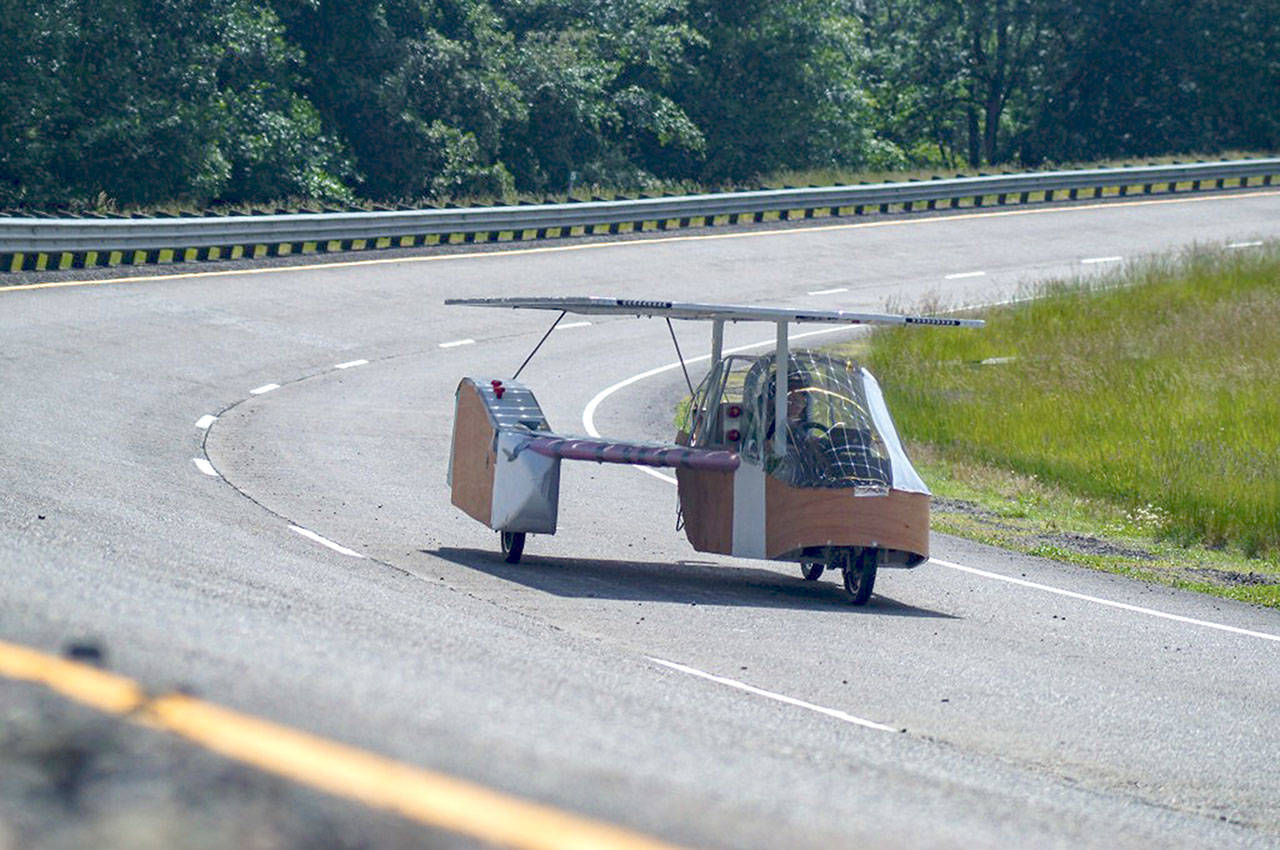The Pacific Northwest may not seem the most likely place for advances in solar technology to originate, but it’s from just that gloomy locale that a team of teens — including two from Bainbridge Island — are set to trek south to a Texas-based competition in July with a solar car design that’s already raising eyebrows.
Raisbeck Aviation High School in Tukwila, part of the Highline School District, is an aviation- and aerospace-themed STEM (science, technology, engineering, and mathematics) school of about 400 students, including Bainbridge Island senior George Sidles and junior Nic Nemeth.
As part of their school’s Green Energy Team, they, along with their teammates, are competing this year in the prestigious Solar Car Challenge: a closed-track endurance race held at the famous Texas Motor Speedway.
Typically, it marks the end of an intensive 15-month cycle of design and construction, during which time teams from around the country take their ideas from the blackboard to the blacktop.
The RAHS team, however, put wheels to pavement in just a single year.
“We just got our finishing touches going on, but we have currently logged over 300 kilometers [about 187 miles] in the car so far, and we have reached a top speed of 50 miles per hour,” said Nemeth, 17. “We have submitted all our paperwork so we’re going to be going to the Texas Motor Speedway.”
That was not the case no long ago, as the RAHS team’s design left some officials skeptical. Things started normal enough, but then the Washington squad got a little, well, nontraditional.
“Originally we were going to have something that looked more like a tricycle, with two wheels in the front and one in the back,” Nemeth explained. “However, for aerodynamics purposes we thought it would be better to have something more of one wheel in the front, one wheel in the back, and then one wheel off to the side in a sort of sidecar configuration.
“So our design is not normal,” he said. “We did actually encounter some questions from the actual Solar Car Challenge [officials] themselves, because we had a pretty unique and original idea that they had not seen before. So they had some more questions about the feasibility, safety, and the actual efficiency of our design.”
The biggest challenge, though, was not in winning over wary judges, according to Nemeth. It was in meeting one of the competition’s primary criteria: making their solar-powered hot rod street legal.
But they did that, too. So, questions answered and paperwork filed, the team is now set for the July 10 competition.
“The test itself is an endurance race,” Nemeth explained. “Over the course of four days it’s [about] whichever team in the four days can complete the most amount of laps.”
The RAHS squad is primed to perform.
“The best part, Nemeth said, “is if we have enough sun we can run indefinitely. We have enough efficiency with our solar panels and batteries that as long as we have the sun we can keep running and we won’t be losing power.”
Though some other teams may well be losing hope.
It is the first year RAHS is competing in the Solar Car Challenge — and they are the only team from the area to enter.
“In our division there are about 13 teams, however we’re the only team in the Pacific Northwest region,” Nemeth said. “There was an Oregon team but they did not qualify for this.”
Nemeth said trying their hand at the car challenge was a natural outgrowth of the club’s previous, windier pursuits.
“For the past two years we were working on the Collegiate Wind Challenge, which is where we are tasked in creating a wind turbine from scratch,” he said. “That is normally a college competition but we were fortunate enough to be allowed to enter as a high school.”
There are prizes to be won in Texas, though Nemeth said the team’s eyes are not exactly on that particular prize.
“I don’t think we’re entering the competition looking for any sort of gain or prize,” he said. “That’s not really what the team here values. For us it’s mostly about, we just really enjoy the process of going through it, learning the new skills required.
“Like I personally had not done any machining or anything of that sort, I’d stuck mostly to design … so this competition really got me to learn new skills and I feel like that’s more what we are about than actual going there and bringing home the gold.”
Nemeth said he and the only other Bainbridge Islander on the squad were friends long before they began attending RAHS, and in fact credits his upperclassmen buddy with introducing him to his science-centric alma mater.
“We both went to Odyssey Middle School,” Nemeth said. “That is where we met each other. And George … was actually the one who introduced me to this school because he went there his freshman year and then, when I was in eighth grade, he told me all about the fun projects he was doing and so that’s really what made me decide to apply.”
For more information about the RAHS Green Energy Team, their solar car, and challenge updates, visit www.rahsgreenenergy.com.



